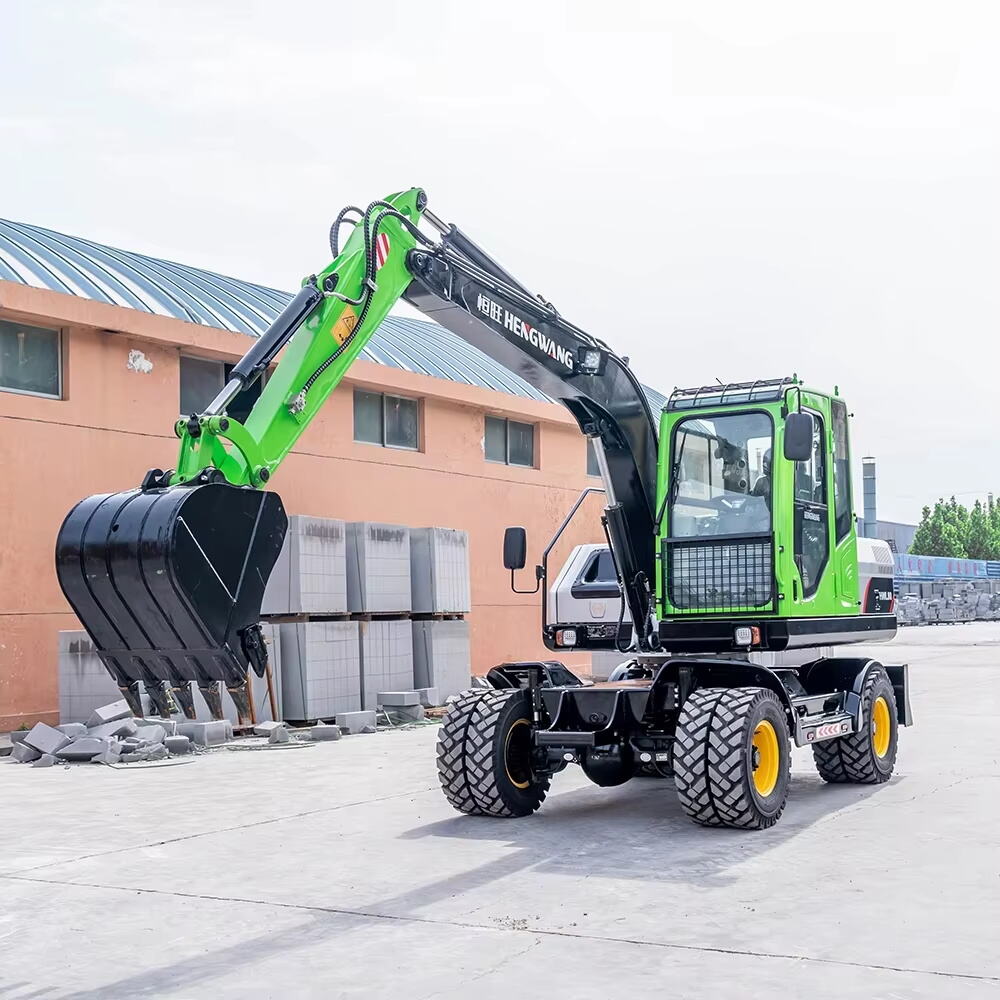The construction landscape in urban environments presents unique challenges that demand specialized equipment solutions. Wheeled excavators have emerged as game-changing machines that revolutionize how construction projects are executed in city settings. These versatile machines combine the power of traditional excavators with enhanced mobility, making them ideal for urban construction scenarios where space is limited and surface protection is crucial.
Urban development projects require equipment that can navigate tight spaces, maintain efficiency, and minimize disruption to surrounding areas. Wheeled excavators excel in these aspects, offering superior maneuverability and rapid deployment capabilities that traditional tracked excavators simply cannot match. As cities continue to grow and evolve, these machines have become indispensable tools for construction companies tackling complex urban projects.
Wheeled excavators revolutionize job site logistics with their ability to move quickly between locations without the need for additional transportation equipment. Unlike their tracked counterparts, these machines can travel on public roads at speeds up to 25 mph, significantly reducing mobilization time and costs. This self-propelled mobility means contractors can respond more quickly to multiple job sites within a single day.
The rubber tires also provide excellent traction on paved surfaces while minimizing damage to existing infrastructure. This makes wheeled excavators particularly valuable in urban environments where protecting roads, sidewalks, and other finished surfaces is paramount. The reduced ground pressure and smooth operation ensure that surrounding areas remain intact during construction activities.
Urban construction often involves working in tight spaces between buildings or in densely populated areas. Wheeled excavators excel in these conditions thanks to their compact turning radius and precise control systems. The ability to maneuver in restricted areas while maintaining full operational capability makes them invaluable for urban renewal projects, utility installations, and road works.
The machines' articulated design allows operators to position themselves optimally for different tasks without repeatedly repositioning the entire unit. This increases efficiency and reduces the overall footprint of construction operations in busy urban environments. The result is less disruption to traffic flow and pedestrian movement around construction sites.

One of the most significant advantages of wheeled excavators is their ability to minimize project downtime. The quick mobility between work areas eliminates the need for loading and unloading from transport vehicles, saving valuable time and resources. Operators can simply drive the machine to the next location, immediately beginning work without the usual setup procedures associated with tracked equipment.
This efficiency translates directly to cost savings, as projects can progress more rapidly with fewer delays. The reduced need for support equipment and transport vehicles also contributes to lower overall operational costs, making wheeled excavators an economically sound choice for urban construction projects.
Modern wheeled excavators are designed with advanced engine technology that optimizes fuel consumption while maintaining high performance levels. The ability to travel between sites under their own power, rather than requiring transport vehicles, further reduces the overall carbon footprint of construction operations.
These machines also typically feature eco-modes and automatic engine shutdown systems that help minimize fuel consumption during idle periods. The reduced environmental impact aligns well with growing urban sustainability requirements and helps construction companies meet increasingly stringent emissions regulations in city centers.
Modern wheeled excavators come equipped with sophisticated stability systems that ensure safe operation on various surfaces. Hydraulic outriggers provide a stable working platform, allowing these machines to maintain balance and precision even when working at maximum reach. The combination of wheels and outriggers offers superior stability compared to traditional tracked excavators in many urban applications.
Advanced electronic monitoring systems continuously assess ground conditions and machine positioning, automatically adjusting stabilizer pressure to maintain optimal safety and performance. This technology enables operators to work confidently in challenging urban environments where surface conditions can vary significantly.
The quick-coupler systems on wheeled excavators allow for rapid attachment changes, enabling one machine to perform multiple functions efficiently. From standard buckets to specialized demolition tools, these machines can quickly adapt to different tasks without lengthy equipment changes or the need for additional machines on site.
Modern wheeled excavators often feature intelligent tool recognition systems that automatically adjust hydraulic settings for different attachments, optimizing performance and preventing operator error. This versatility makes them particularly valuable in urban projects where space for multiple machines may be limited.
Wheeled excavators feature rubber tires instead of tracks, allowing them to travel on paved surfaces without damage and move between job sites independently. They offer greater mobility, faster travel speeds, and can work on finished surfaces while providing similar digging capabilities to tracked machines.
While wheeled excavators excel in many urban applications, they may have limitations in extremely soft ground conditions or where maximum digging depth is required. However, for most urban construction tasks including utilities, road work, and general construction, they prove highly effective and versatile.
Wheeled excavators reduce costs through faster mobilization between sites, eliminated transport equipment needs, decreased surface damage, and lower fuel consumption. Their versatility also means fewer machines are required on site, leading to significant operational cost savings over the project lifecycle.
 Hot News
Hot News2024-10-31
2024-10-28
2024-10-25
2024-10-23
2024-10-21
2024-09-03